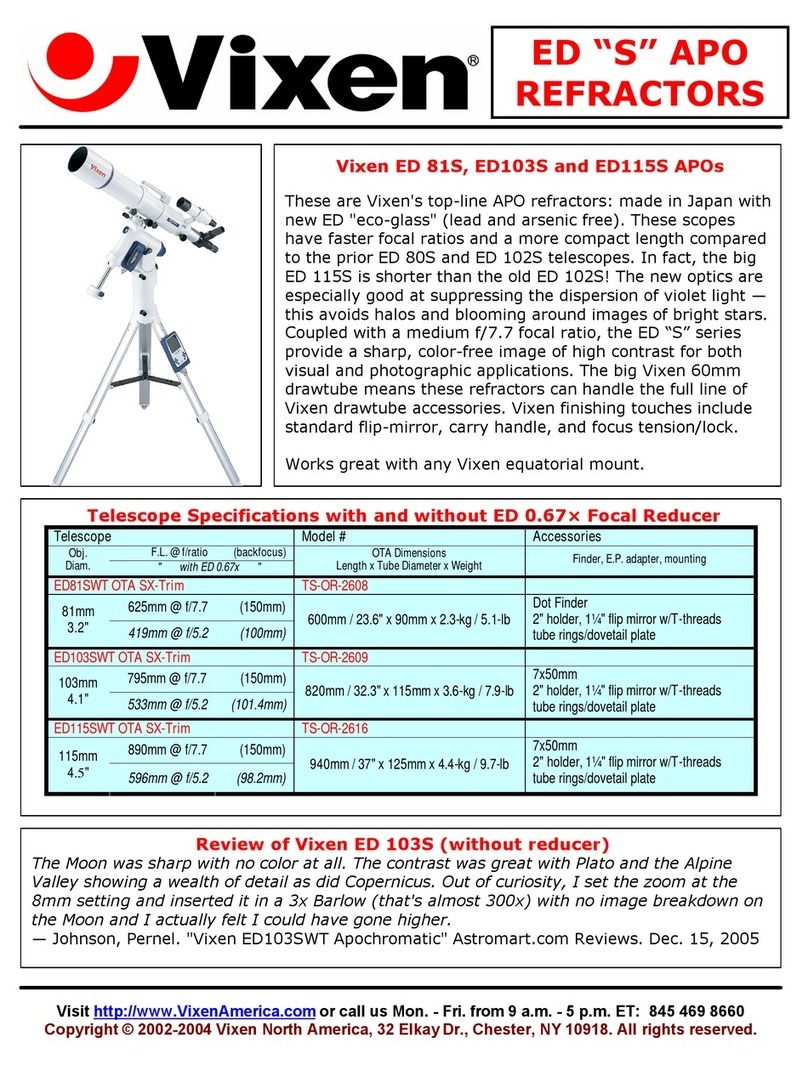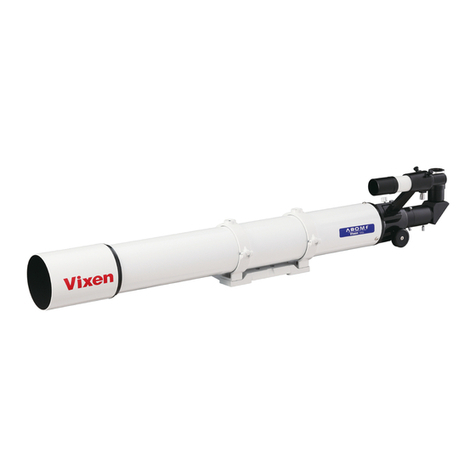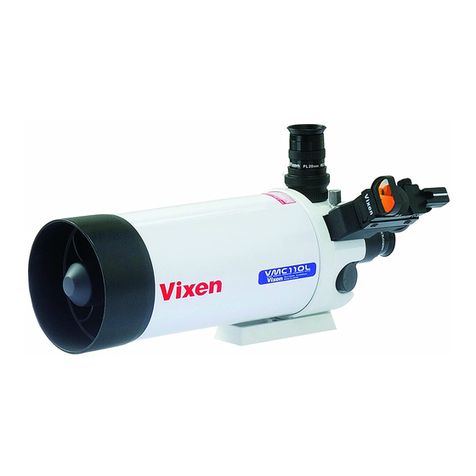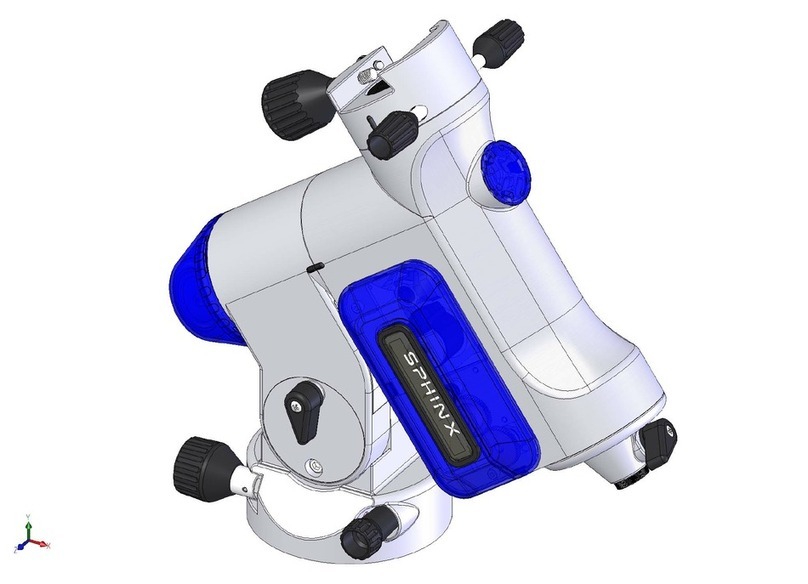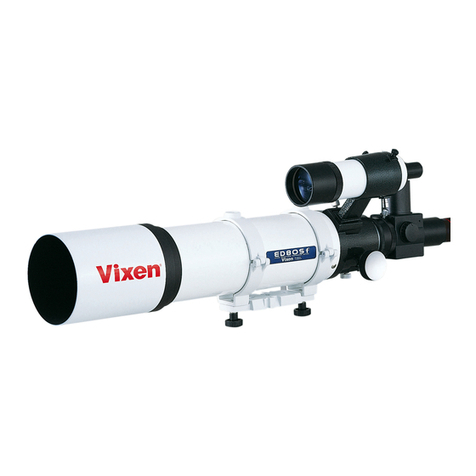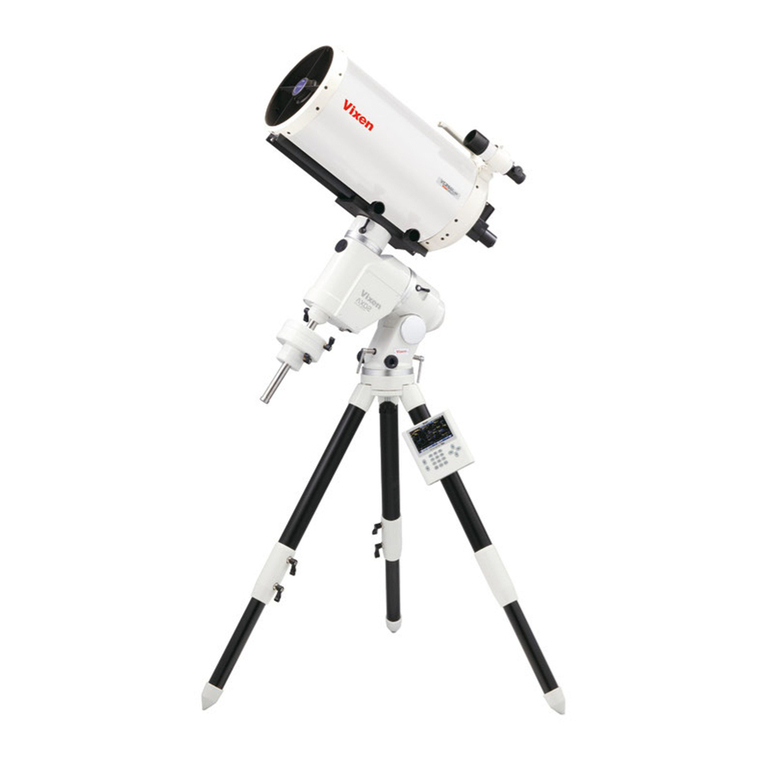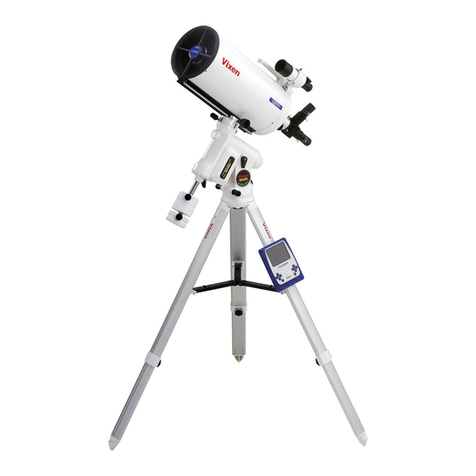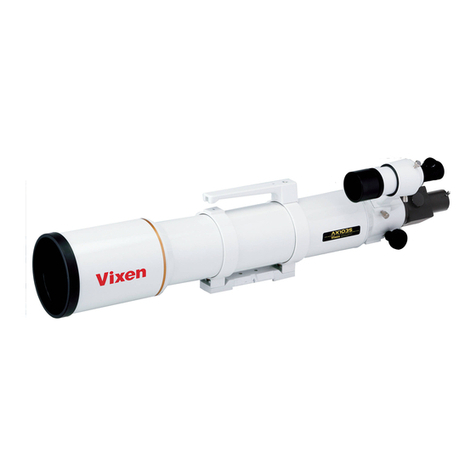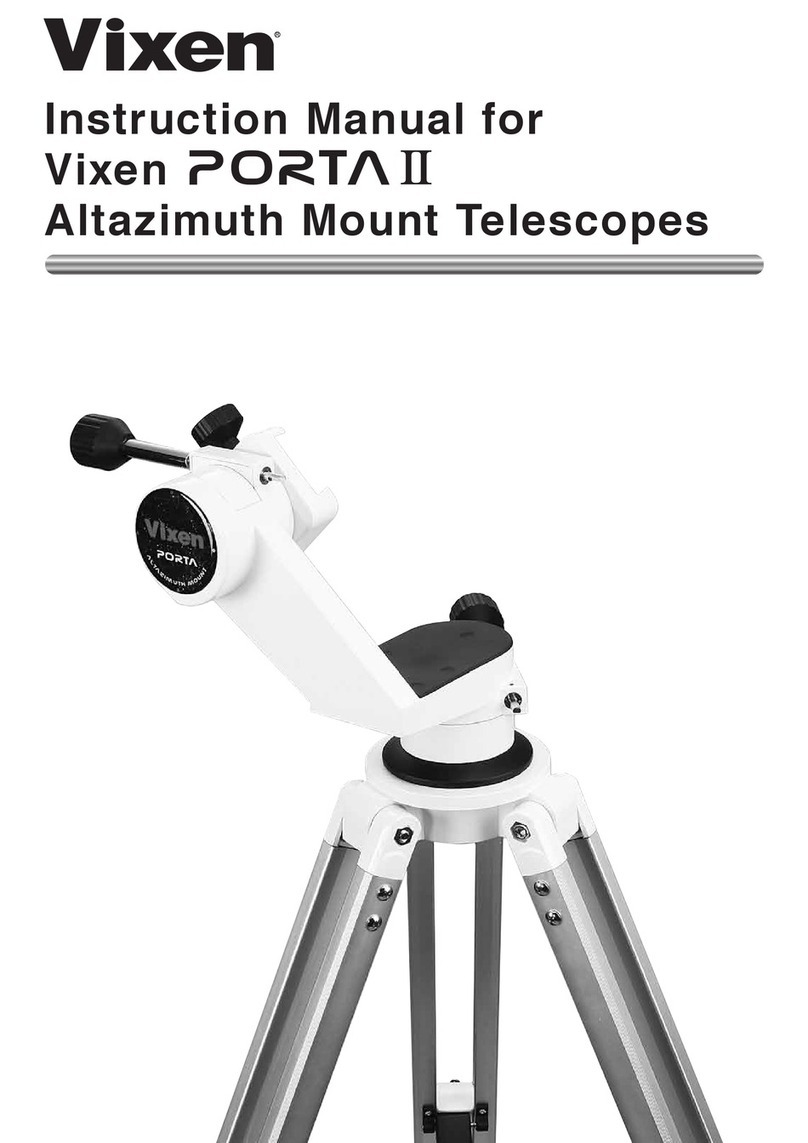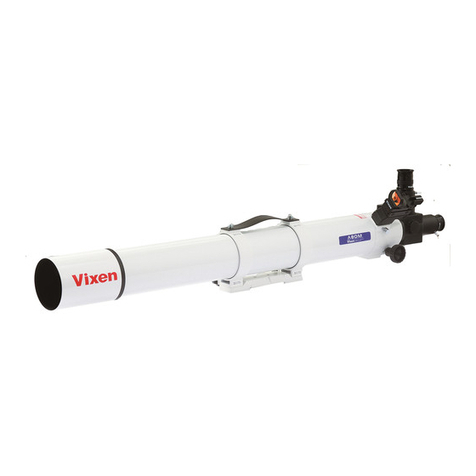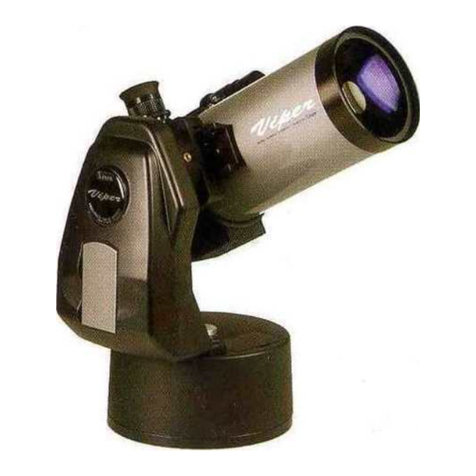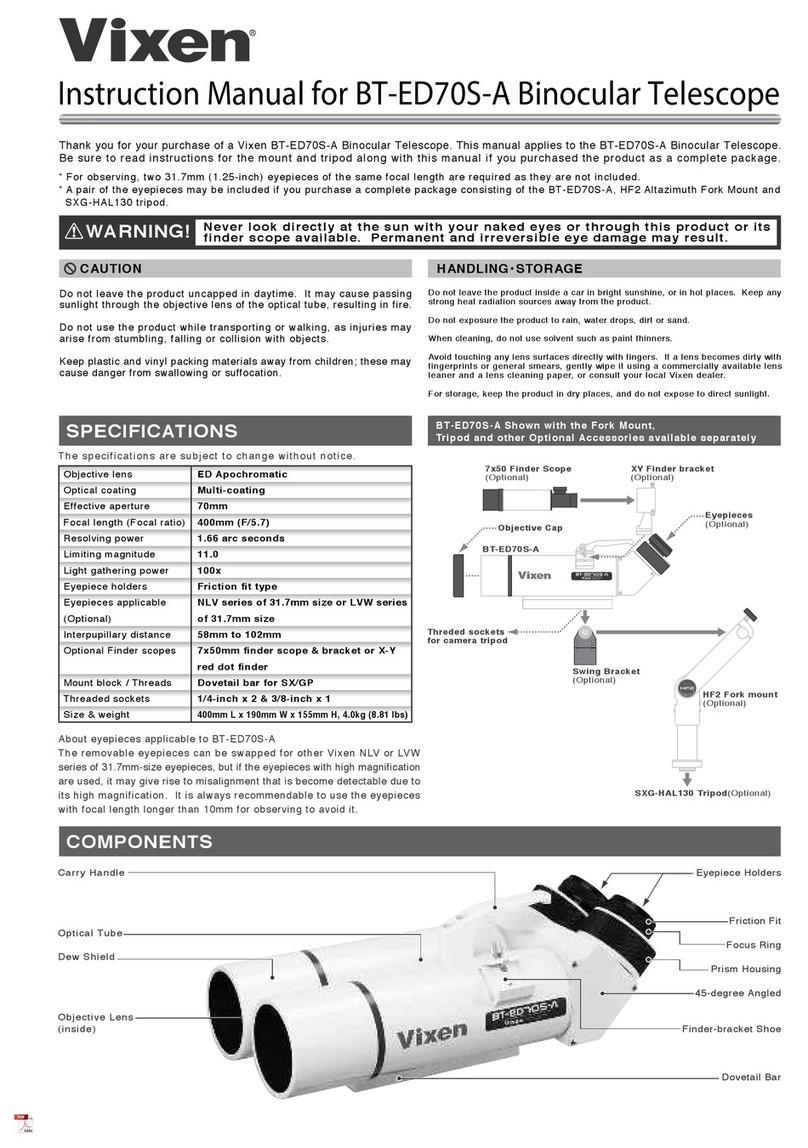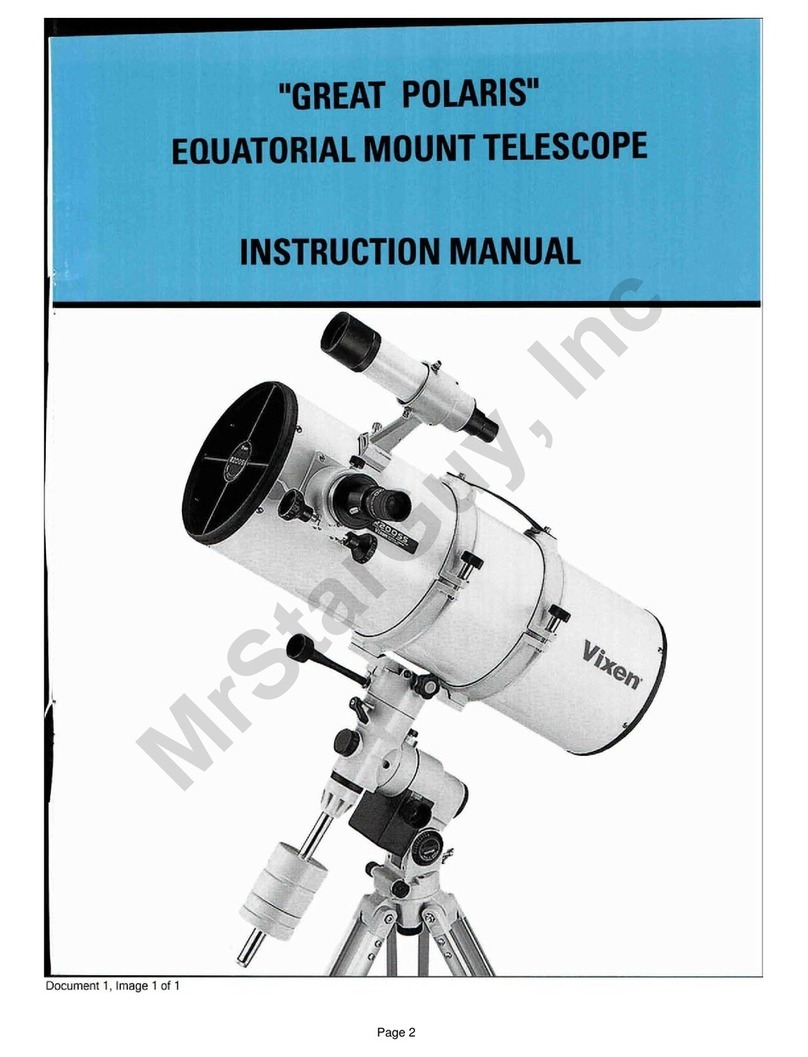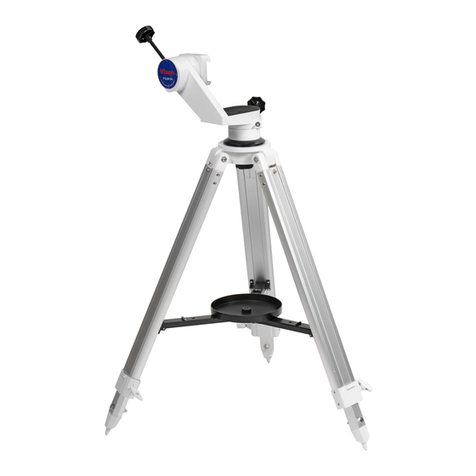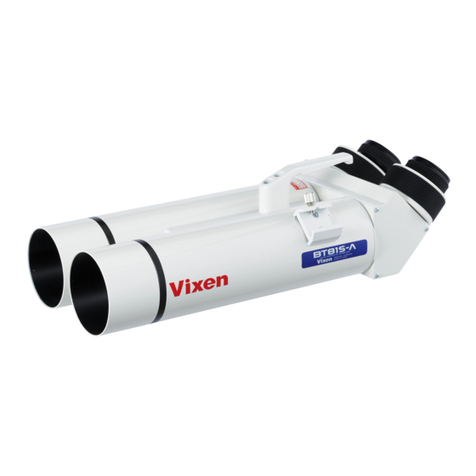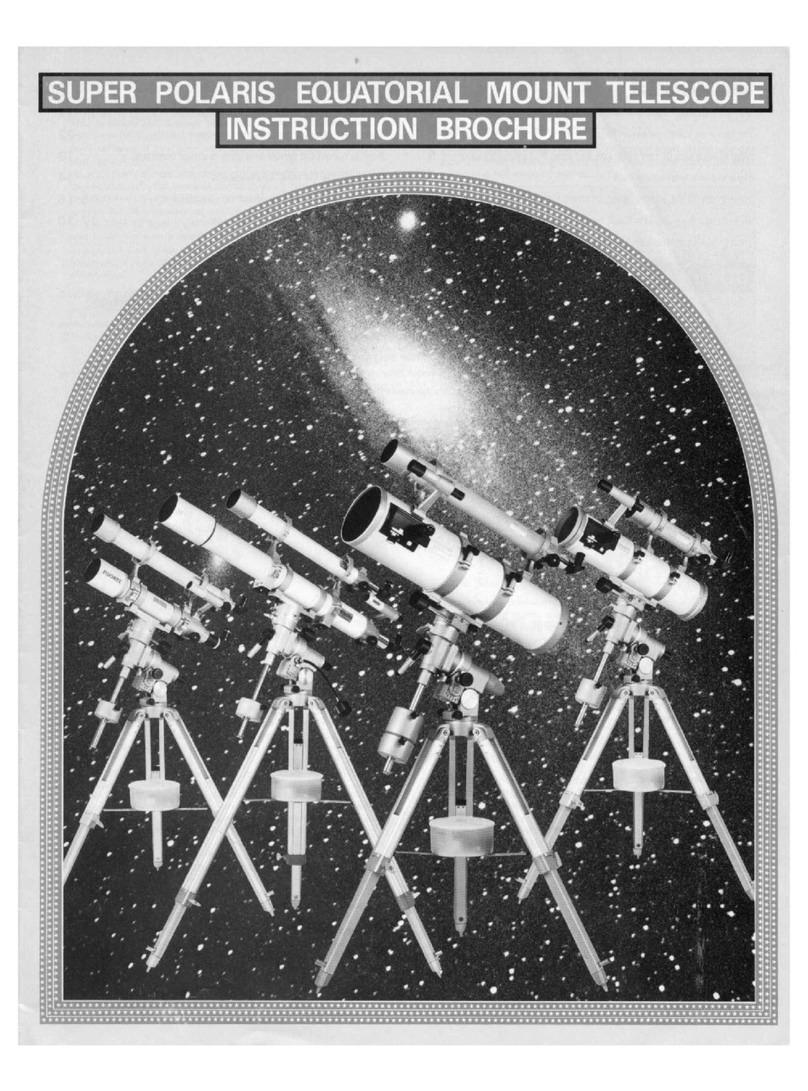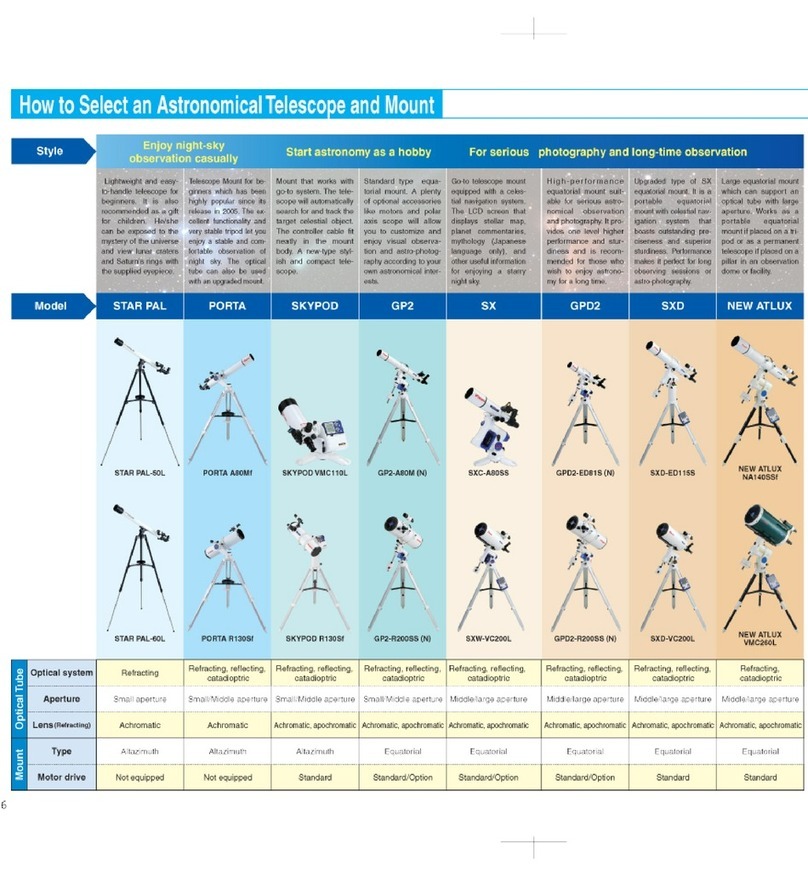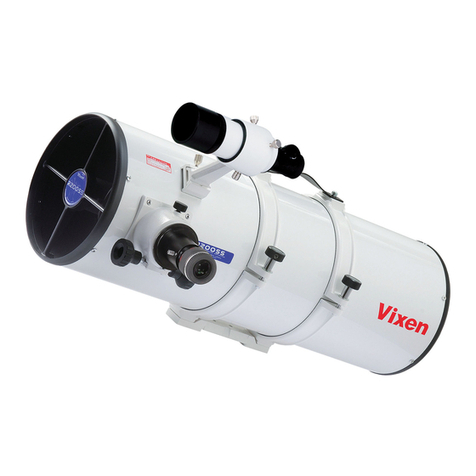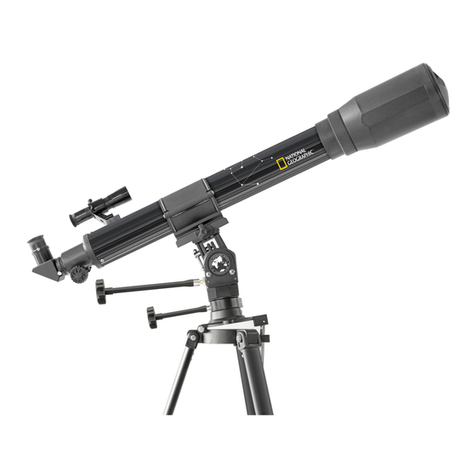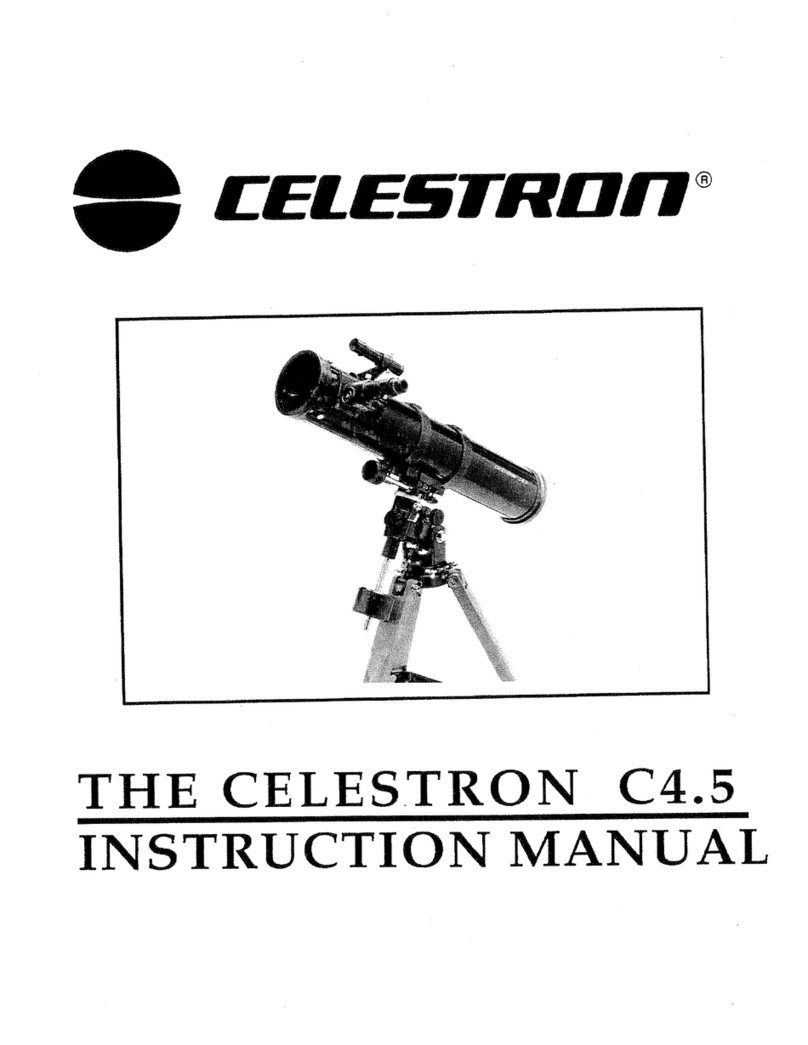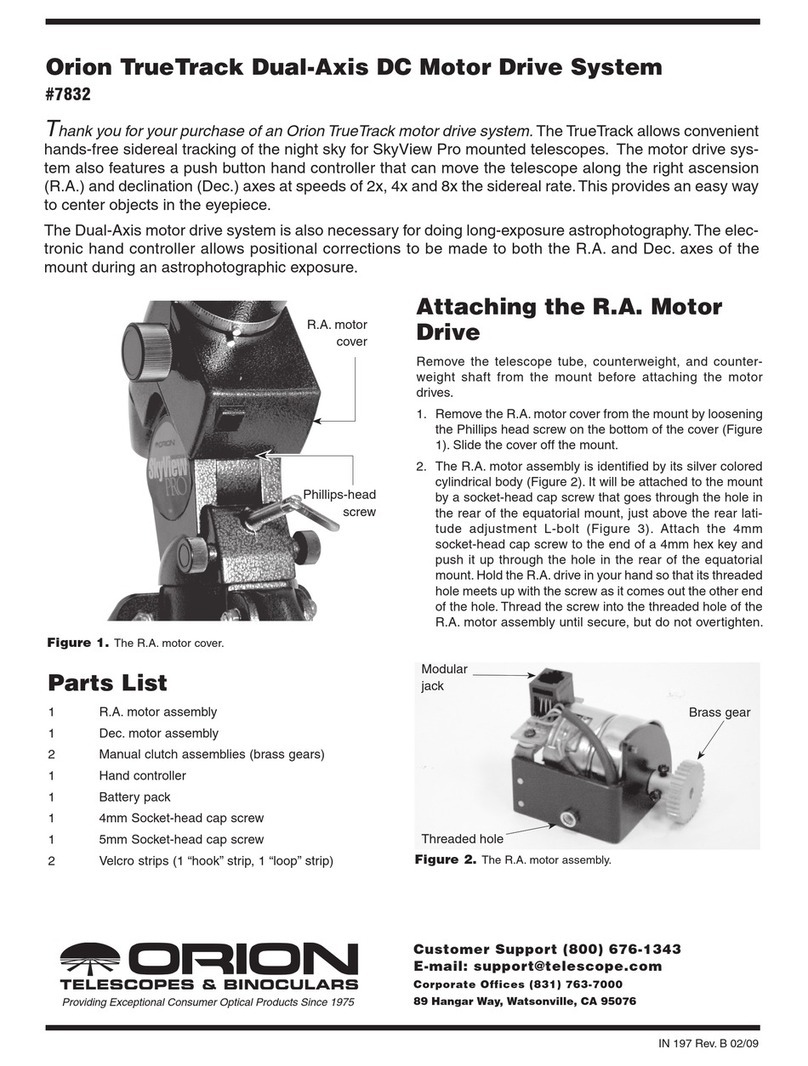
The end of the eyepiece
(rubber armored)
Lock ring
Objective lens cell
(The front side of the finderscope)
Brightness adjustment dial
(combined with a power
switch)
Power “off” position
Brightness adjustment dial
(combined with a power
switch)
Power “off” position
The end of the eyepiece
(rubber armored)
Lock ring
Objective lens cell
(The front side of the finderscope)
Tips on the collimation
Collimation screws
Secondary
mirror holder
Silhouette of
the secondary mirror
Silhouette of
the secondary mirror
Blade spider
Out of alignment
Misaligned slightly
Aligned correctly
Front side of the VMC260L
Your VMC260L is collimated at Vixen’s factory. The optical tube holds the collimation unless it is handled roughly. You can re-collimate the
VMC260L by way of the following procedures if necessary.
Use an eyepiece with high magnification and
repeat the above procedures so that you can
make more precise re-collimation of the
optical axis.
After you collimate the VMC260L properly,
you perform a star test with a medium to
high power eyepiece by selecting a star of
the second or third magnitude.
Note: Right after you focus on the star
precisely, defocus the star image slightly to
look at a diffraction pattern of the star.
It is essential to collimate the telescope
under good seeing condition.
If the concentric diffraction rings can be seen,
the optical axis has been re-collimated precisely.
Locate three Allen screws that
are set near the center of the
four-vane spider on the front of
the optical tube.
Attach an eyepiece with medium power (80x or adjacent) onto the
eyepiece holder and bring a bright star such as Polaris into the
field of view. Turn the
focus knob to defocus
the star image fully
until it is enlarged and
blurred as much as one
third of the viewing
field. The silhouette of
secondary mirror is seen
near the center of the blurred star image at this time.
If optical axis is aligned correctly, both the blurred star image and
silhouette of the secondary mirror can be seen at the center of the
field of view.
If it is not aligned concentrically, move those images to the center
of the field of view. With an Allen wrench, adjust the collimation
screw nearest or furthest from the direction of those images.
Turn the collimation screw clockwise or counterclockwise gradually
until the blurred star image and silhouette of the secondary mirror
are aligned concentrically in the center of the field of view.
Adjusting the Illuminated Reticle on the Finderscope
The built-in illumination of the finderscope allows you to easily recognize the dim crosshairs in the dark field of view of the finderscope.
• The brightness of the illuminated reticle
varies gradually as you turn the brightness
adjustment dial.
• Don’t forget to turn off the illuminated reticle
after you finish using the finderscope.
• The dial will return to the “off “position if you
continue turning.
• Adjust the brightness properly. The brighter
the illumination of the reticle, the sooner the consumption of the battery. If too bright, it makes stars in the field of view invisible.
Focusing the Finderscope
The finderscope is adjusted to focus on infinity at Vixen’s factory before shipment. Because the ability of vision differs with individual persons,
it is possible that you will need to readjust the focus of your 7X50mm finderscope.
While looking through
the finderscope, turn the
end of the finderscope’s
eyepiece to left or right
by hand to bring the
cross hairs reticle into
focus.
How to Collimate the VMC260
15
6
7
2
3
4
1. It will be efficient if one person checks the star image and another
person adjust the collimation screws.
2. The star image moves largely even if you turn the collimation screw
a little.
3. If one of the collimation screws are hard to turn, be sure to turn the
opposite two screws in a reverse direction.
Focus on the crosshairs
While holding the lock ring
next to the objective lens
cell of the finderscope,
turn the objective lens
cell so that it loosens.
Find a position of the
objective lens cell that
brings a distant view
into focus. Tighten the
objective lens cell with
the lock ring at that
position.
Focus on the target
7
